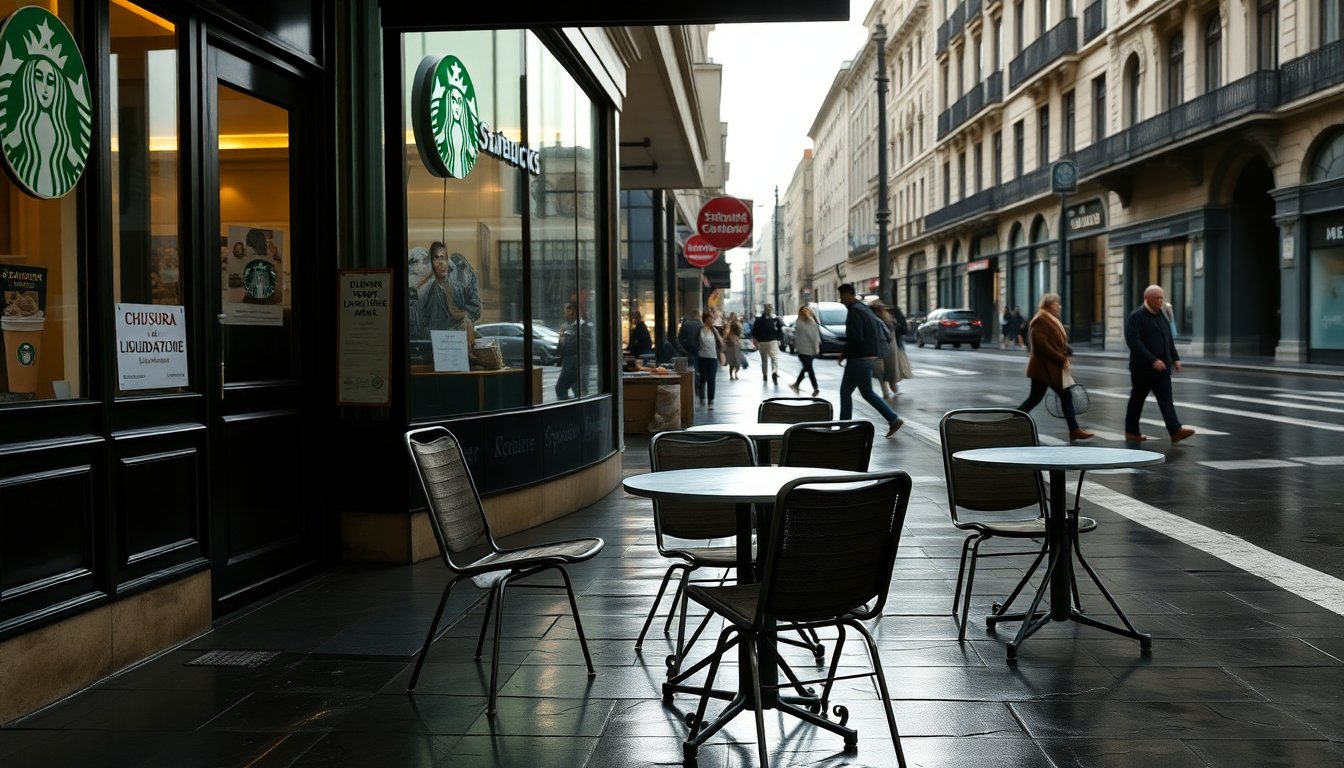Table of Contents
In a decisive effort to enhance operational efficiency and refresh its brand, Starbucks has revealed plans to close several underperforming stores across North America. This move is part of a larger restructuring strategy led by CEO Brian Niccol, which is expected to result in costs nearing $1 billion. The initiative aims to tackle the persistent decline in sales that the company has faced for more than six consecutive quarters.
Store closures and layoffs
On Thursday, the coffee corporation announced plans to reduce its presence in the United States and Canada by approximately 1 percent. This reduction equates to several hundred locations closing by the end of the 2025 fiscal year. Notably, this includes the closure of its flagship Seattle roastery, a significant site for the brand.
The anticipated layoffs are expected to affect around 900 employees. This follows an earlier reduction of 1,100 corporate positions earlier in the year. Concerns have emerged regarding this decision, particularly in light of CEO Niccol’s compensation package, which was reportedly valued at $95.8 million last year. This figure starkly contrasts with the average earnings of a barista, underscoring one of the largest CEO-to-worker pay disparities within the S&P 500.
Union dynamics and employee unrest
The closures include a prominent unionized Starbucks outlet in Seattle, where employees voted to unionize in 2022. Negotiations with the Workers United union, which represents over 12,000 baristas, began in April but have stalled since then. Tensions intensified when union members staged a walkout in December during the busy holiday season to protest against the stalled contract negotiations.
Another unionized location in Chicago also faced closure, prompting baristas from various stores in the region to gather and protest. Diego Franco, a barista from Des Plaines, highlighted the vital role employees play in attracting customers to the stores, stating, “We’re here to remind the company that it’s the workers who actually bring the people into the stores.” Despite these closures, a spokesperson for Starbucks maintained that the union status did not influence the decision-making process.
Strategic focus on operational improvement
As part of its turnaround strategy, Starbucks CEO Howard Niccol aims to restore the classic coffeehouse ambiance that has defined the brand. An internal review revealed locations that either did not meet customer expectations or lacked a viable path to profitability. Niccol stated that the company cannot sustain locations that do not contribute positively to its financial performance.
By the end of the current fiscal year, Starbucks plans to operate approximately 18,300 locations across North America, a reduction from the 18,734 previously reported in a regulatory filing. Analysts at TD Cowen estimate that this restructuring may impact around 500 company-owned stores in North America.
Investments in technology and staffing
Starbucks remains committed to enhancing operational efficiency despite recent layoffs. The company plans to invest in staffing improvements and adopt technology to better manage order sequences and improve the overall customer experience. Earlier, Starbucks announced a reduction of 1,100 corporate roles, alongside a modest 2 percent salary increase for all salaried employees in North America.
During his first year in charge, Niccol has prioritized reducing management layers and upgrading the physical spaces of Starbucks locations. As consumers become more discerning and competition intensifies, Starbucks must adapt to changing market demands to regain its competitive edge.
The implications
The recent announcements from Starbucks mark a significant shift for the coffee chain as it addresses declining sales and changing consumer preferences. The closures and layoffs represent a difficult aspect of the restructuring process. However, these changes are part of a broader strategy aimed at revitalizing the brand and creating a more sustainable operational model. As the company undergoes these transformations, the emphasis will remain on improving the customer experience and restoring its iconic coffeehouse atmosphere.


